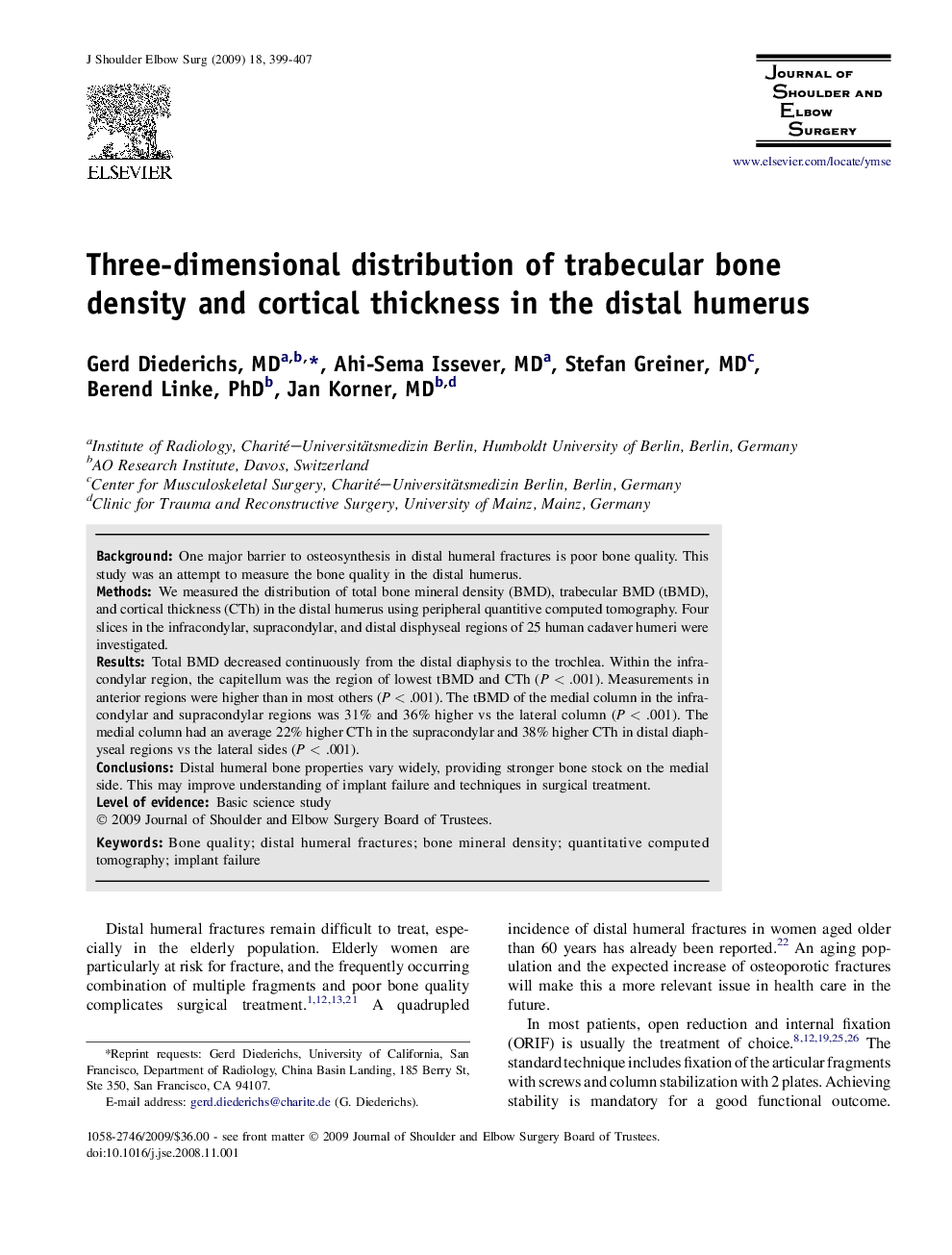| Article ID | Journal | Published Year | Pages | File Type |
|---|---|---|---|---|
| 4075348 | Journal of Shoulder and Elbow Surgery | 2009 | 9 Pages |
BackgroundOne major barrier to osteosynthesis in distal humeral fractures is poor bone quality. This study was an attempt to measure the bone quality in the distal humerus.MethodsWe measured the distribution of total bone mineral density (BMD), trabecular BMD (tBMD), and cortical thickness (CTh) in the distal humerus using peripheral quantitive computed tomography. Four slices in the infracondylar, supracondylar, and distal disphyseal regions of 25 human cadaver humeri were investigated.ResultsTotal BMD decreased continuously from the distal diaphysis to the trochlea. Within the infracondylar region, the capitellum was the region of lowest tBMD and CTh (P < .001). Measurements in anterior regions were higher than in most others (P < .001). The tBMD of the medial column in the infracondylar and supracondylar regions was 31% and 36% higher vs the lateral column (P < .001). The medial column had an average 22% higher CTh in the supracondylar and 38% higher CTh in distal diaphyseal regions vs the lateral sides (P < .001).ConclusionsDistal humeral bone properties vary widely, providing stronger bone stock on the medial side. This may improve understanding of implant failure and techniques in surgical treatment.Level of evidenceBasic science study
